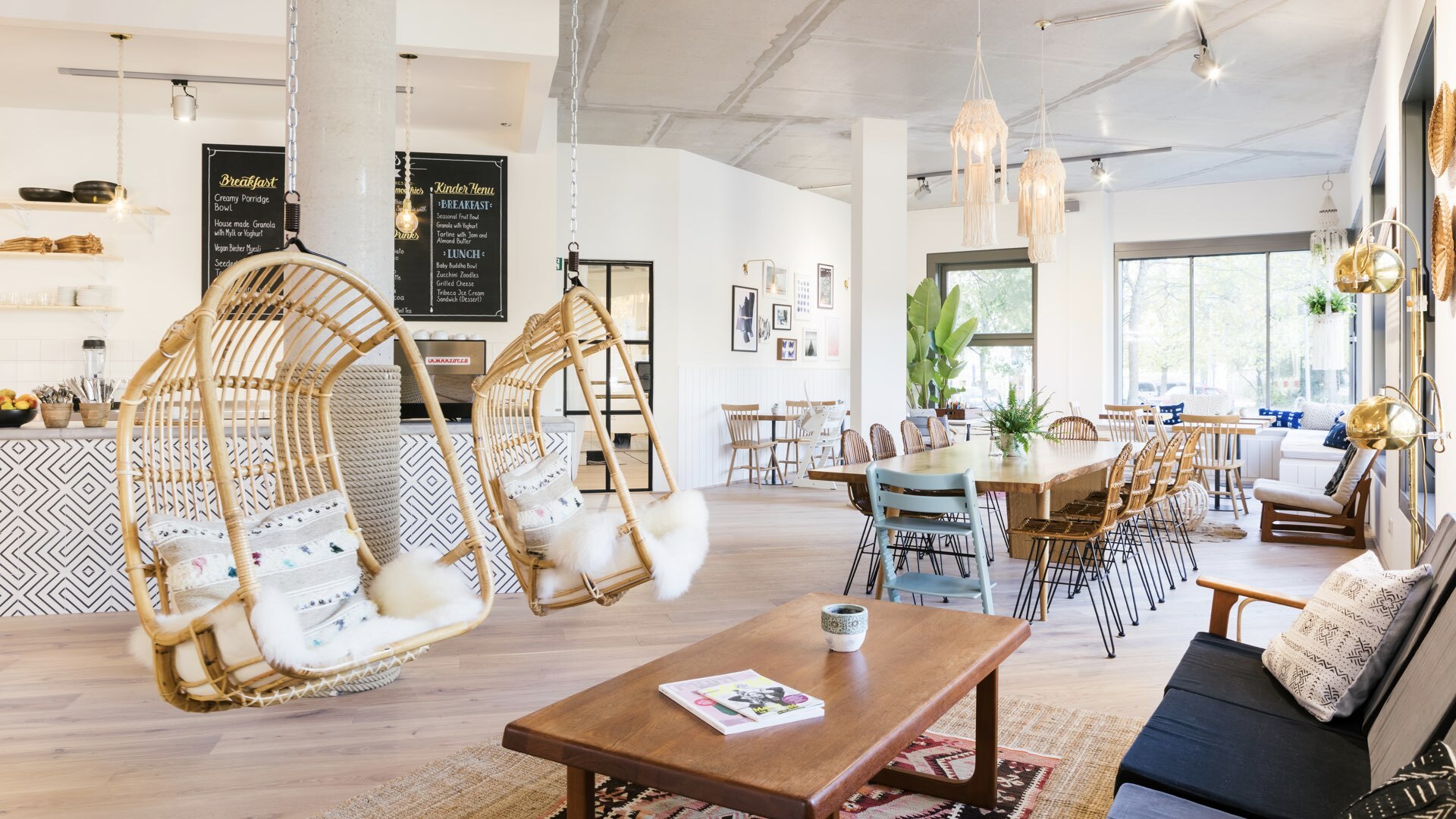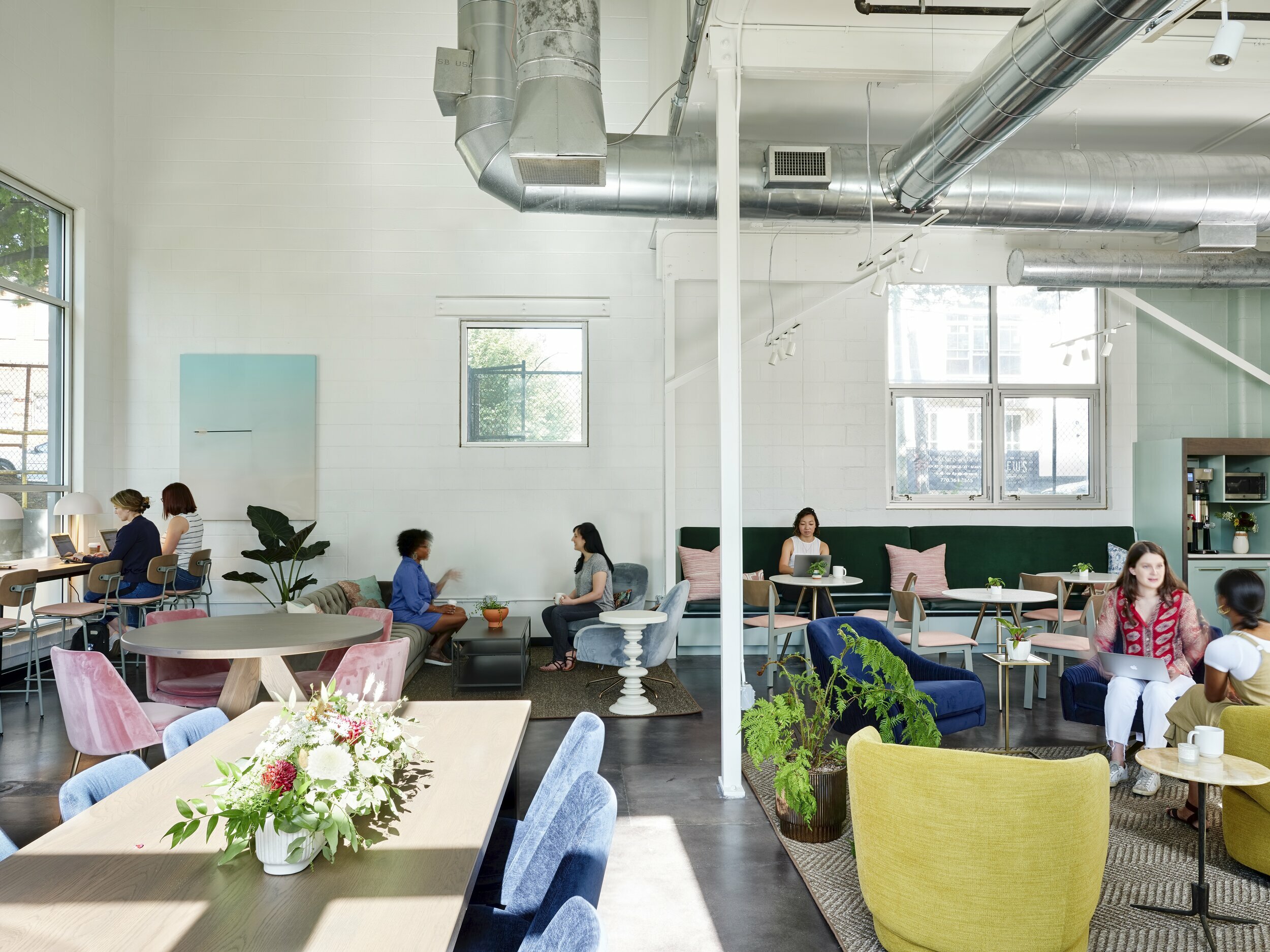How coworking spaces are finding new definitions for 'community'
This post is part of our series focused on the seismic shift in work systems, traditional office typology, and more. Start at the beginning with an overview.
How are coworking spaces, and their communities, dealing with Covid-19?
When people talk about co-working, they typically talk about community at the same time. Building a sense of belonging has been crucial in the development of co-working spaces from the start, and this hard-won clan mentality is going through unprecedented stress this year.
Owners and managers of coworking spaces are looking hard at their short-term finances as well as interrogating their long-term business models. The time for constant and rapid change in co-working spaces is now.
Read more to find out.
Why coworking spaces work
Coworking spaces have always been about what they had to offer aside from a cheaper space to work in the presence of others. They’ve been known for coffee gatherings, work-week send-off drinks on Fridays, networking mingling events, and for their emphasis on collaboration between people who might not have met or worked together otherwise.
Now, though, it seems like coworking spaces don’t have much to offer anyone without the in-person conversation, fancy coffee and membership perks.
Coworking companies are doing their best to fight this assumption by focusing on their communities during the outbreak of the Novel Coronavirus.
What makes a ‘community’, though?
It’s a word bandied about by marketers since the dawn of, well, marketing.
At its very basis, a community was once defined by geography, by social groups and business connections.
This idea of community has been democratised somewhat by the internet because suddenly everyone can access the same wealth of information as anyone else, and it’s easier to connect with peers and mentors than ever.
Related post: Coliving is the new face of coworking

("Factory Berlin's diverse community of members and partners collaborate to build the world of tomorrow.")
Communities also bring meaning to the lives of their inhabitants.
This is something that coworking spaces have capitalised on in their messaging: they can help workers find meaning through creating a community that belongs to them rather than one that’s ‘forced’ on them by corporate culture.
Coworking spaces were successful because of people’s desire for a deeper sense of connection. Humans are wired for connection. Coworking spaces seemed like the perfect answer in a world of growing work pressure, increasing distractions, endless scrolling, video conferencing, proliferating mobile devices and cloud computing.
Has Covid-19 put an end to this ‘perfect’ dream?
Everything that coworking spaces were an answer to about work-life has been swept away by stay-at-home orders worldwide.
Coworking spaces were built on the idea of innovation and agility, though, and they could be finding themselves at the beginning of an exciting revolution in the way we work and what the design of work-life looks like.
Why coworking spaces are here to stay
The pandemic is redefining everything about us, our communities and our careers. We’re questioning fundamentals such as who we are and what we do, as well as how and where we do it.
Let’s back up a bit though. The world of work was evolving even before this global pandemic hit, with news of four-day workweek experiments (hello, Microsoft Japan!), booming. Digital nomads were popping up everywhere, freed from the tyranny of geography by the internet and fast connection speeds. Video conferencing has been a thing forever.
We would argue that coworking spaces themselves were indicative of this sea change. They provided an offering of a new way to work and live that was proving to be very popular.
Related post: Design coworking spaces that work

(Wunderhaus, 'A family membership club to relax and recharge, in the heart of Berlin Prenzlauer Berg.')
The coworking community supporting the coworking community
Of course, it’s easy to say all this without looking at the financial impact that owning a large space that people pay to enter that is now currently empty and has been for months.
“We’re going to have a big transition from people switching from their full membership to the hold membership, and of course that will have a big financial impact on us,” Hannah Ashford, Factory Berlin’s head of community, told Sifted.
This is where the community built by coworking spaces before the pandemic is coming in to save the day now that the going is tough.
Nate Heasley, the Co-Founder and Executive Director of the All Good Work Foundation, helpfully provided a comprehensive list of tasks to be tackled:
- Provide office space or storage space (if possible) to organizations doing essential work
- Become a community hub for the collection of donations of items like food and masks
- Provide mail or call-answering services for community organizations that have been displaced from their offices
- Activate your own network of members and others in your community to support specific nonprofits that may have been in your space, or that are doing essential work. Find ways to help these organizations through donations of money, food, technology or time.
Definitely food for thought.
How coworking spaces are coping during COVID
But how are the built environments themselves coping?
Different coworking hubs have responded by setting up Zoom rooms – essentially live-streaming you at work to other people at work so that you can all work together, virtually.
Not such a great idea, though, seeing as Zoom fatigue is real.
However, even Airbnb is offering ‘virtual’ experiences in an attempt to stay relevant in a world in flux, so we’ll see how that plays out.
Other coworking spaces are mining their community members for class material to be shared with other community members, often spread online via video link from the built coworking environment itself.
”Our Wunder Studio with classes for children and mothers is very popular and we are speaking with our freelancers to create virtual classes. We try the best we can to support our freelancers during this difficult time.” Shirley Erskine, founder of Wunderhaus, a co-working community in Berlin for creatives with families (Sifted).
Related post: Office design is transforming in the new now

(The Lola, a womxn’s club and community founded in Atlanta, GA in 2019.)
Will coworking spaces survive?
People are more than just ‘what they do’ for work even though ‘so what do you do?’ is the most frequently asked question when meeting new people.
This just illustrates that community is more important than ever, in co-working spaces and beyond, for a number of different reasons.
When social distancing restrictions ease further, the world will find that membership and co-working spaces are in better shape than assumed.
“We believe the desire to have a flexible space to work and see clients may increase, as many companies look to decrease their office size and footprint, and create more flexibility,” they say. “We have the opportunity to emerge from this crisis with both healthier employees and better performing organizations.” – Eileen Lee and Martine Resnick, co-founders of The Lola, a co-working community in Atlanta, USA. (Hypepotamous)
Healthy design for healthy communities
Coworking spaces can thrive because of their community rather than trying to save their community
Many of these spaces are seeing it as an opportunity to build new connections and find out how to help people who want to work flexibly in a different way.
Finally, the Coronavirus has forced many built commercial spaces around the world to pull themselves up by their bootstraps and examine whether their architectural structures are ‘healthy’ or not.
We hope you’ve enjoyed this post, and found some solid things to think about for your post-pandemic office space. Get in touch for a chat about your office space!
Don’t forget to check out the beginning of this series, and the next post is ‘Innovation Is Flourishing In The Open-Plan Office'.
